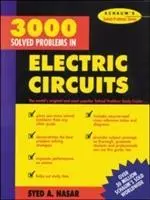Dekorationsartikel gehören nicht zum Leistungsumfang.
Sprache:
Englisch
87,95 €*
Versandkostenfrei per Post / DHL
Lieferzeit 1-2 Wochen
Kategorien:
Beschreibung
In recent years, researchers have increasingly recognized the dominant role of the local atomic environment in controlling the electronic structure and properties of materials. This recognition has spawned the "real-space" approach that provides a coherent framework for the study of perfect
and defective crystals and non-crystalline materials. In addition to presenting these ideas, this text details the reciprocal-space approach--exemplified in band theory--and draws powerful links between the two approaches. The book includes illustrations and examples of many up-to-date
calculations based on density functional theory that are used today as predictive tools in materials science. Throughout the book, the mathematical complexity is kept to a minimum, while comprehensive problem sets allow readers to master the fundamental concepts. The text provides for students in
materials science, physics, and chemistry a unique introduction to predictive modelling of the electronic structure and properties in today's materials.
and defective crystals and non-crystalline materials. In addition to presenting these ideas, this text details the reciprocal-space approach--exemplified in band theory--and draws powerful links between the two approaches. The book includes illustrations and examples of many up-to-date
calculations based on density functional theory that are used today as predictive tools in materials science. Throughout the book, the mathematical complexity is kept to a minimum, while comprehensive problem sets allow readers to master the fundamental concepts. The text provides for students in
materials science, physics, and chemistry a unique introduction to predictive modelling of the electronic structure and properties in today's materials.
In recent years, researchers have increasingly recognized the dominant role of the local atomic environment in controlling the electronic structure and properties of materials. This recognition has spawned the "real-space" approach that provides a coherent framework for the study of perfect
and defective crystals and non-crystalline materials. In addition to presenting these ideas, this text details the reciprocal-space approach--exemplified in band theory--and draws powerful links between the two approaches. The book includes illustrations and examples of many up-to-date
calculations based on density functional theory that are used today as predictive tools in materials science. Throughout the book, the mathematical complexity is kept to a minimum, while comprehensive problem sets allow readers to master the fundamental concepts. The text provides for students in
materials science, physics, and chemistry a unique introduction to predictive modelling of the electronic structure and properties in today's materials.
and defective crystals and non-crystalline materials. In addition to presenting these ideas, this text details the reciprocal-space approach--exemplified in band theory--and draws powerful links between the two approaches. The book includes illustrations and examples of many up-to-date
calculations based on density functional theory that are used today as predictive tools in materials science. Throughout the book, the mathematical complexity is kept to a minimum, while comprehensive problem sets allow readers to master the fundamental concepts. The text provides for students in
materials science, physics, and chemistry a unique introduction to predictive modelling of the electronic structure and properties in today's materials.
Inhaltsverzeichnis
- Introduction
- 1: The diatomic molecule
- 2: From the finite to the infinite
- 3: Into 2 and 3 dimensions
- 4: Band gaps: origins and consequences
- 5: s-p bonding - a case study in silicon
- 6: Free electron theory
- 7: Properties of free electron metals
- 8: The transition metals
- 9: Structural stability of compounds
- 10: Introduction to modern quantitative theory
- 11: Where band theory breaks down
- 12: References
- 13: Problems
- 14: Sample examination questions
- Index
Details
| Erscheinungsjahr: | 1993 |
|---|---|
| Fachbereich: | Technik allgemein |
| Genre: | Importe, Technik |
| Rubrik: | Naturwissenschaften & Technik |
| Medium: | Taschenbuch |
| ISBN-13: | 9780198517542 |
| ISBN-10: | 0198517548 |
| Sprache: | Englisch |
| Einband: | Kartoniert / Broschiert |
| Autor: |
Sutton, Adrian D.
Sutton, Adrian P. |
| Hersteller: | OUP Oxford |
| Verantwortliche Person für die EU: | Libri GmbH, Europaallee 1, D-36244 Bad Hersfeld, gpsr@libri.de |
| Maße: | 234 x 156 x 15 mm |
| Von/Mit: | Adrian D. Sutton (u. a.) |
| Erscheinungsdatum: | 30.09.1993 |
| Gewicht: | 0,43 kg |
Inhaltsverzeichnis
- Introduction
- 1: The diatomic molecule
- 2: From the finite to the infinite
- 3: Into 2 and 3 dimensions
- 4: Band gaps: origins and consequences
- 5: s-p bonding - a case study in silicon
- 6: Free electron theory
- 7: Properties of free electron metals
- 8: The transition metals
- 9: Structural stability of compounds
- 10: Introduction to modern quantitative theory
- 11: Where band theory breaks down
- 12: References
- 13: Problems
- 14: Sample examination questions
- Index
Details
| Erscheinungsjahr: | 1993 |
|---|---|
| Fachbereich: | Technik allgemein |
| Genre: | Importe, Technik |
| Rubrik: | Naturwissenschaften & Technik |
| Medium: | Taschenbuch |
| ISBN-13: | 9780198517542 |
| ISBN-10: | 0198517548 |
| Sprache: | Englisch |
| Einband: | Kartoniert / Broschiert |
| Autor: |
Sutton, Adrian D.
Sutton, Adrian P. |
| Hersteller: | OUP Oxford |
| Verantwortliche Person für die EU: | Libri GmbH, Europaallee 1, D-36244 Bad Hersfeld, gpsr@libri.de |
| Maße: | 234 x 156 x 15 mm |
| Von/Mit: | Adrian D. Sutton (u. a.) |
| Erscheinungsdatum: | 30.09.1993 |
| Gewicht: | 0,43 kg |
Sicherheitshinweis












